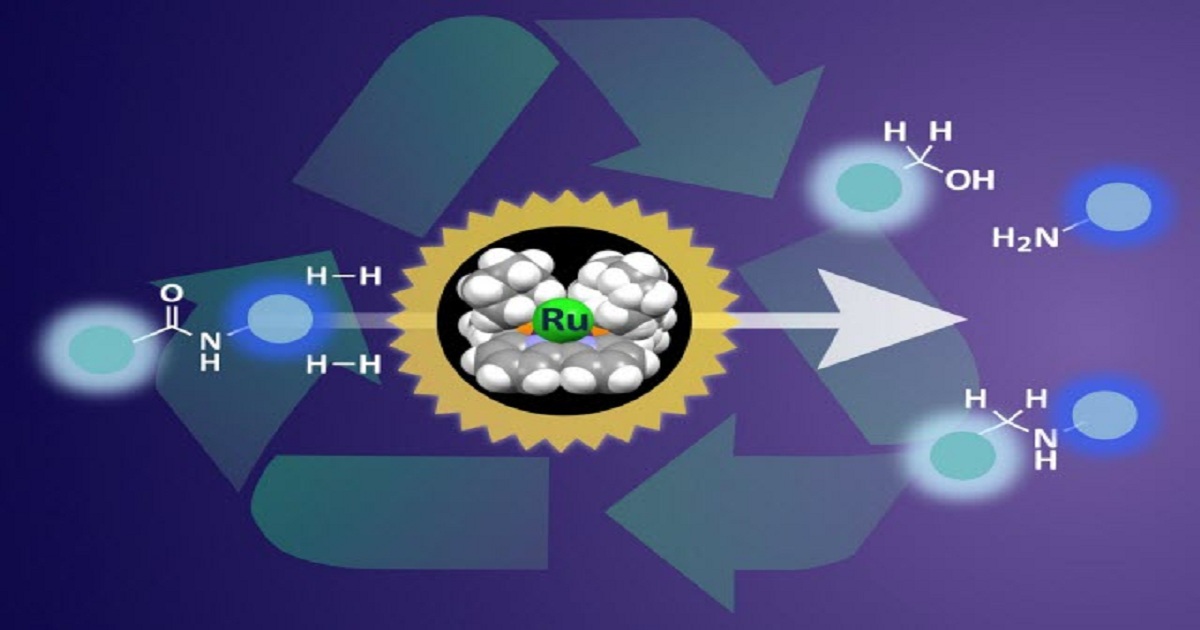Researchers Break down Plastic Waste
Lab Manager | November 26, 2018

Design of a sterically confined bipyridine-ruthenium (Ru) framework allows controlled confinement of adsorbed H2 and its delivery to inert amides enabling catalytic hydrogenation of a wide range of amide bonds. Cleavage of both C=O and C-N lactam bonds achieved by activation of a single precatalyst.PHOTO CREDIT: NAGOYA UNIVERSITY. Nagoya, Japan — What do proteins and Kevlar have in common? Both feature long chain molecules that are strung together by amide bonds. These strong chemical bonds are also common to many other naturally occurring molecules as well as man-made pharmaceuticals and plastics. Although amide bonds can give great strength to plastics, when it comes to their recycling at a later point, the difficulty of breaking these bonds usually prevents the recovery of useful products. Catalysts are widely used in chemistry to help speed up reactions, but breaking the kinds of amide bonds in plastics, such as nylon, and other materials require harsh conditions and large amounts of energy.